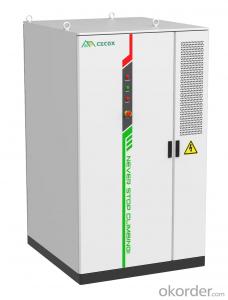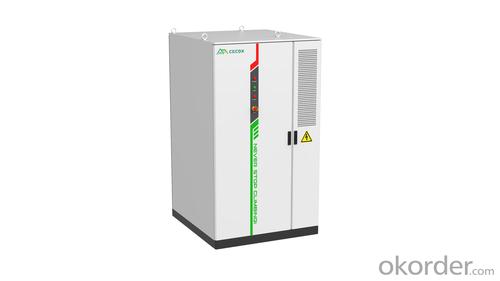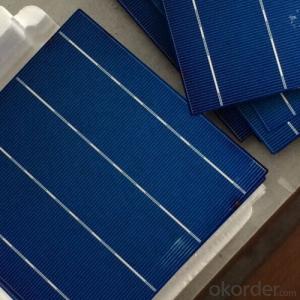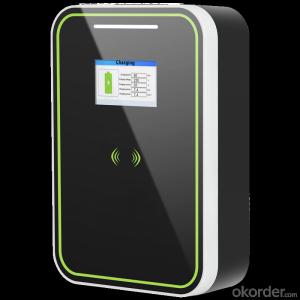Mj Solar Cells 186kw/372kwh 280ah Efficient and Smart Liquid-Cooling Cabinet Commercial/Industrial Storage
- Loading Port:
- SHANGHAI
- Payment Terms:
- TT OR LC
- Min Order Qty:
- 5 unit
- Supply Capability:
- 200 unit/month
OKorder Service Pledge
OKorder Financial Service
You Might Also Like
Specification
Product Features
Ultimate Safety
Multistage variable diameter liquid cooling pipeline, system temperature difference ≤ 4 ℃
Micro channel equalization pipeline, PACK temperature difference ≤ 2.5 ℃
Highly automated ,CCS integrated design
Electrical multidimensional fusion perception 15-year extra long life coolant
Smart and Efficient
BMS active balancing technology improves SOS accuracy by 3% and extends system life by 20%
OTA upgrade is sent from the cloud and upgrade efficiency is improved by more than 90%
Panoramic online monitoring and scheduling
Global customized design and development services
Support virtual power plant interconnection
Flexible and Convenient
Modular design, standardized interface
Elastic expansion, multi machine parallel connection
Multi-sensor and intelligent control system
Triple level modular PCS, up to 99% maximum efficiency
Cloud and edge integrated energy storage intelligent operation and maintenance center
Quick Response
Support multi-device access and multi-user sharing
Millisecond response to power dispatch
100% pre-installed integration
Equipped with LVRT, HVRT functions, and various control modes such as PQ, VF, and networking
Technical Data
Battery Type: LFP-280Ah
System Configuration: 8*1P52S
Rated Charge/Discharge Ratio: ≤0.5P
Rated Capacity:372kWh
DC Rated Voltage:1331.2V
DC Voltage Range:1164.8 ~ 1497.6V
AC Rated Power:186kW
AC Rated Voltage:690V±15%
Rated Grid Frequency:50Hz/60Hz
Size(W*D*H):1329*1447*2300mm
Weight:3.8t
Protection Level:IP54(PACK IP67)
Operating Temperature Range:-30 ~ 55℃
Relative Humidity Range:5% ~ 95%(Non condensation)
Operating Altitude:≤2000m(>2000m Reduction)
Fire Protection System:Aerosol/Perfluoro
Communication Interfaces:CAN/RS485/Ethernet
- Q:Are solar cells affected by extreme temperatures?
- Yes, solar cells are affected by extreme temperatures. High temperatures can cause the efficiency of solar cells to decrease, as the excess heat can reduce their ability to convert sunlight into electricity. Conversely, extremely cold temperatures can also impact the performance of solar cells, although to a lesser extent. It is important to note that modern solar cell designs often incorporate measures to mitigate the effects of temperature, such as using materials that can withstand extreme conditions.
- Q:Can solar cells be used to power remote agricultural monitoring systems?
- Yes, solar cells can be used to power remote agricultural monitoring systems. Solar cells convert sunlight into electricity, which can be stored in batteries for use during the night or when there is no sunlight. This makes solar cells a reliable and sustainable energy source for powering agricultural monitoring systems located in remote areas where access to the electric grid may be limited or unavailable.
- Q:Is it possible to learn how to make solar cells by yourself?
- A solar cell can be made very simply by using a sheet of copper and some other materials. So the answer is yes!
- Q:Can solar cells be used for off-grid living?
- Yes, solar cells can be used for off-grid living. Solar cells, also known as photovoltaic cells, convert sunlight into electricity. This renewable energy source can be harnessed to power various appliances and systems in off-grid homes, providing a sustainable and independent energy solution. By storing excess electricity in batteries, solar cells ensure a continuous power supply even during cloudy or nighttime conditions. This makes them a reliable and cost-effective option for off-grid living, reducing reliance on traditional power grids and minimizing environmental impact.
- Q:Can solar cells be used in off-grid water desalination?
- Yes, solar cells can be used in off-grid water desalination. Solar-powered desalination systems utilize solar energy to power the process of removing salt and impurities from water, making it suitable for consumption or agricultural use. These systems typically include solar panels to generate electricity for powering the desalination process, making them a sustainable and eco-friendly solution for off-grid water desalination.
- Q:Can solar cells be used to charge batteries?
- Yes, solar cells can indeed be used to charge batteries. Solar cells convert sunlight into electricity, which can then be used to charge batteries and store energy for later use. This is a common application of solar energy, especially in off-grid and remote areas where access to the grid is limited or unavailable.
- Q:What is the lifespan of a solar cell?
- The lifespan of a solar cell can vary depending on various factors, but on average, solar cells have a lifespan of around 25 to 30 years. However, with proper maintenance and care, solar cells can even last longer, sometimes up to 40 years or more.
- Q:How do solar cells perform in regions with high levels of salt spray and corrosive environments?
- Solar cells can be affected by salt spray and corrosive environments, which can degrade their performance over time. The exposure to high levels of salt spray can lead to corrosion of the cell's components, such as the metallic contacts, leading to a decrease in efficiency. However, manufacturers have developed various protective coatings and materials to mitigate the effects of salt spray and corrosion, ensuring the long-term performance of solar cells in such challenging environments.
- Q:What is the cost of solar cells?
- The cost of solar cells can vary depending on various factors such as the type of solar cell, its efficiency, manufacturing process, and market conditions. Generally, the cost has been declining over the years and continues to do so. As of 2021, the average cost of solar cells is around $0.20 to $0.50 per watt. However, it's essential to consider the overall system cost, including installation, inverters, and other components, to determine the total investment required for a solar energy system.
- Q:Can solar cells be combined with energy storage systems?
- Yes, solar cells can be combined with energy storage systems. This integration allows for the excess energy generated by solar cells to be stored for later use, such as during periods of low sunlight or at night. Energy storage systems, such as batteries, enable a more reliable and efficient utilization of solar energy, making it a feasible and sustainable solution for meeting energy demands.
1. Manufacturer Overview |
|
|---|---|
| Location | |
| Year Established | |
| Annual Output Value | |
| Main Markets | |
| Company Certifications | |
2. Manufacturer Certificates |
|
|---|---|
| a) Certification Name | |
| Range | |
| Reference | |
| Validity Period | |
3. Manufacturer Capability |
|
|---|---|
| a)Trade Capacity | |
| Nearest Port | |
| Export Percentage | |
| No.of Employees in Trade Department | |
| Language Spoken: | |
| b)Factory Information | |
| Factory Size: | |
| No. of Production Lines | |
| Contract Manufacturing | |
| Product Price Range | |
Send your message to us
Mj Solar Cells 186kw/372kwh 280ah Efficient and Smart Liquid-Cooling Cabinet Commercial/Industrial Storage
- Loading Port:
- SHANGHAI
- Payment Terms:
- TT OR LC
- Min Order Qty:
- 5 unit
- Supply Capability:
- 200 unit/month
Offcanvas right
OKorder Service Pledge
OKorder Financial Service
Similar products
New products
Hot products
Hot Searches
Related keywords
































